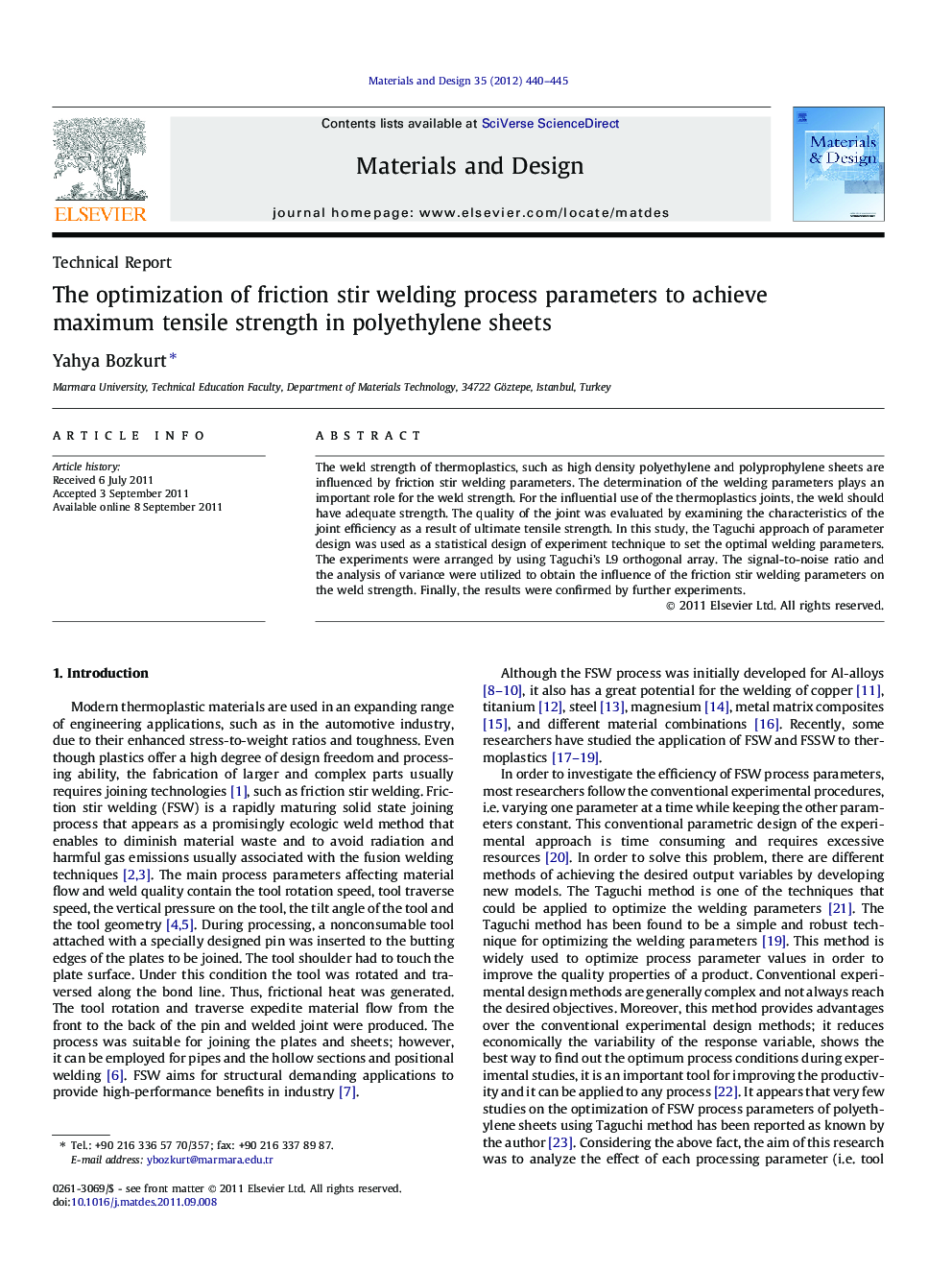| Article ID | Journal | Published Year | Pages | File Type |
|---|---|---|---|---|
| 830962 | Materials & Design (1980-2015) | 2012 | 6 Pages |
The weld strength of thermoplastics, such as high density polyethylene and polyprophylene sheets are influenced by friction stir welding parameters. The determination of the welding parameters plays an important role for the weld strength. For the influential use of the thermoplastics joints, the weld should have adequate strength. The quality of the joint was evaluated by examining the characteristics of the joint efficiency as a result of ultimate tensile strength. In this study, the Taguchi approach of parameter design was used as a statistical design of experiment technique to set the optimal welding parameters. The experiments were arranged by using Taguchi’s L9 orthogonal array. The signal-to-noise ratio and the analysis of variance were utilized to obtain the influence of the friction stir welding parameters on the weld strength. Finally, the results were confirmed by further experiments.
Graphical abstract(a) FSW process of the HDPE sheets, (b) ANOVA analyses for optimum tool rotation speed and tilt angle on ultimate tensile strength.Figure optionsDownload full-size imageDownload as PowerPoint slideHighlights► Tensile strength is the main characteristic recognized in this study defining the quality of FSW joints of HDPE sheets. ► A minitab statistical software was used to explain the welding parameter effect. ► The maximum tensile joint efficiency value was obtained about 86.2%. ► The tool rotation speed plays an important role and contributes 73.85% to the overall welding parameters.
